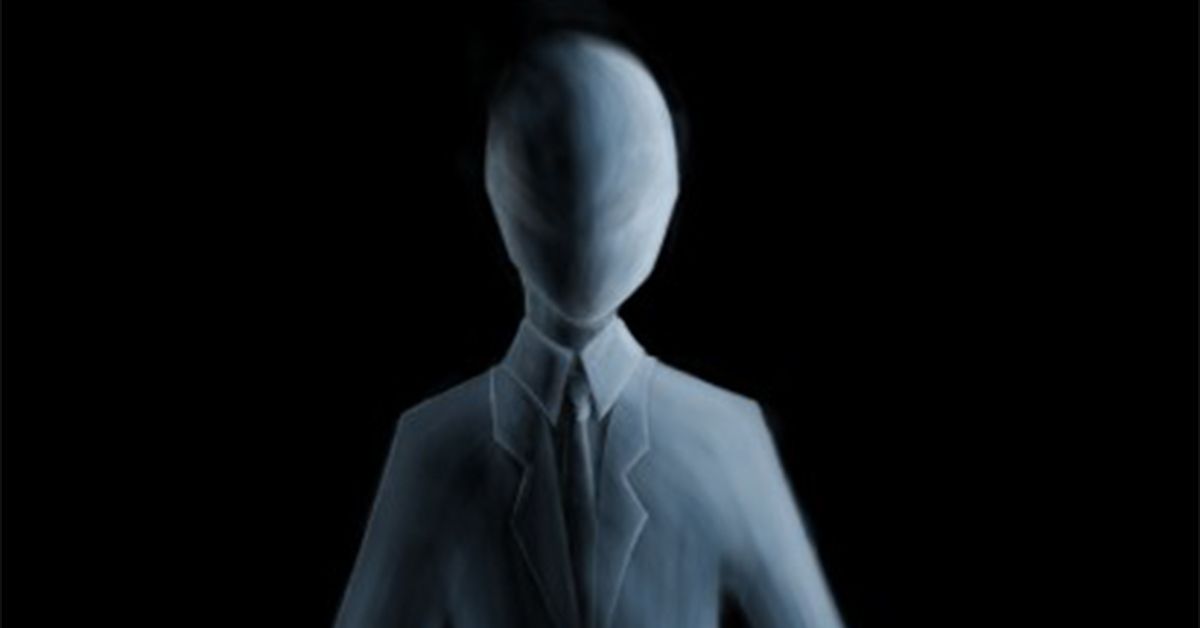Origin
On 31 May 2014, three 12-year-old girls embarked on a "birdwatching" expedition in a wooded area near their homes in Waukesha, Wisconsin that ended in one of them being stabbed 19 times and left for dead. Seriously injured, the victim managed to crawl to a nearby road, where she was found and taken to a hospital. She told police her friends had attacked her.
The other two girls were arrested and charged with attempted first-degree intentional homicide. The attack weapon was found among their belongings. They admitted to planning and executing the crime. Under interrogation, they claimed they did it to appease a supernatural being called Slenderman (aka Slender Man), who was described in a Newsweek article as "an evil character who lives only on the Internet," but in whom the accused attackers said they fervently believed:
According to the criminal complaint obtained by Newsweek, Morgan Geyser and Anissa Weier, both 12, discovered Slender Man on Creepypasta Wiki, a website dedicated to Internet horror stories (its tagline: “Proudly hosting 12,151 of your worst nightmares since 2010”). They believed he was real. In early 2014, Geyser and Weier decided to become what they called “proxies” of Slender Man, thereby proving their dedication to him and his existence to skeptics. To do so, they’d have to kill someone.
Although months in the planning, their mission did not succeed. The victim, Payton Leutner, recovered, though she still lives in fear for her life, her mother says. The accused were tried as adults and pleaded guilty to the attack but argued in court they weren't responsible for their actions due to mental illness. In December 2017, Weier was sentenced to 25 years in a psychiatric institution. Geyser has yet to face sentencing.
'Dark and wicked things'
The incident was cast as a cautionary tale for parents by Waukesha police chief Russell Jack, who cited it as a consequence of allowing children unsupervised access to the Internet:
Keeping children safe is more challenging than in years past. The Internet has changed the way we live. It is full of information and wonderful sites that teach and entertain. The Internet can also be full of dark and wicked things.
But although it's true there are "dark and wicked things" to be found on the Internet (as in life, generally), and children's use of the Internet ought indeed to be supervised, to suggest that the Slenderman materials viewed by the accused are "wicked," in any deeper sense than, say, a Stephen King novel is "wicked," is to misunderstand them. The Slenderman "mythos," as the accumulated stories, images, and commentary related to the character have come to be called, is a blend of fiction and folklore. It's a crowd-sourced horror story that hearkens back to boogeyman tales of old.
Origin of a monster
The first time the name "Slender Man" appeared anywhere in print or on screen was on the entertainment web site SomethingAwful.com on 10 June 2009. Someone started a thread in a discussion forum, essentially a Photoshop contest, entitled "Create Paranormal Images." Among the early entries was one posted under the pseudonym "Victor Surge" (later identified as member Eric Knudsen), consisting of an old photograph manipulated to depict a tall, faceless human-like figure with tentacle-like arms lurking in the shadows near a children's playground:
One of two recovered photographs from the Stirling City Library blaze. Notable for being taken the day which fourteen children vanished and for what is referred to as "The Slender Man". Deformities cited as film defects by officials. Fire at library occurred one week later. Actual photograph confiscated as evidence.1986, photographer: Mary Thomas, missing since June 13th, 1986.
The effect was understated, yet creepy. Inspired by the example, others contributed photos and backstory expanding on Surge's themes, and piecemeal construction of the Slenderman mythos, a collaborative project from the start, was underway. As Surge himself suggested, it was also, from the start, a patchwork of cultural influences:
Where did you get the source for Slender Man? Or was he done from a scratch?
The Slender Man as an idea was made-up off the top of my head, although the concept is based on a number of things that scare me. The name I thought up on the fly when I wrote that first bit. The asset I used for a couple of the pictures was the creepy tall guy from Phantasm, which sadly I have not seen, and the others various guys in suits. All of the things that aren't the torso and legs, like the tentacles and Slender Man's face, were painted from scratch however.
The mythos
By the time middle-schoolers Morgan Geyser and Anissa Weier encountered the Slenderman character years later, the mythos had grown considerably and was being archived on fan sites like Creepypasta Wiki (creepypasta" being an Internet slang term for user-created horror stories and images). It's where, for example, the girls would have read that Slenderman uses fear to control people's minds, and then kills them:
He is described as wearing a black suit strikingly similar to the visage of the notorious Men In Black, and as the name suggests, appears very thin and able to stretch his limbs and torso to inhuman lengths in order to induce fear and ensnare his prey. Once his arms are outstretched, his victims are put into something of a hypnotized state, where they are utterly helpless to stop themselves from walking into them.
He is also able to create tendrils from his fingers and back that he uses to walk on in a similar fashion to Doctor Octopus. The superhuman stretching ability could also be seen as a similarity between himself and Mr. Fantastic.
Whether he absorbs, kills, or merely takes his victims to an undisclosed location or dimension is also unknown as there are never any bodies or evidence left behind in his wake to deduce a definite conclusion.
It's also where they would have learned what a Slenderman "proxy" is:
Proxy (plural: Proxies) is the term given to those who serve The Slender Man. The theory behind the name is that Proxies are entities or people who are under the influence or control of the Slender Man (or the same force that influences Slender Man), and act based on its wants and needs — hence, Proxies serve as an in-between (i.e. a proxy) for Slender Man.
And it's where they would have been introduced to "evidence" that Slenderman sightings date back to the 16th-century in Germany, where woodcuts documenting reports of a murderous so-called "Tall Man" (Der Großmann) with a spear-like arm and superfluous legs were allegedly found:




